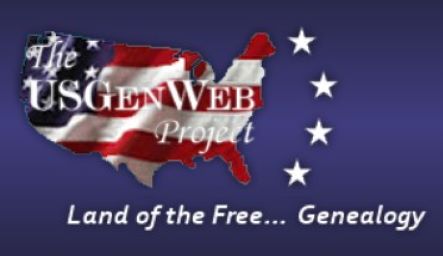|
Excerpts from Chapter 2 Pine Lands for Sale:
“Before the lands that were destined to
be Knox Mills were purchased for logging they were covered with hemlock,
white and yellow birch, tamarack, spruce, balsam, rock elm, butternut, red
oak, hard and soft maple, basswood, white and black ash, cedar and aspen,
in addition to vast stretched of pine. Through this unbroken forest in
southeaster Price County, Wisconsin,
a small stream, Long Meadow Creek, now known as Knox Creek, flowed into a
branch of the Manito, or Spirit
River. This
forestland had been virtually untouched by humans. Native Americans
followed trails north and south of the area but not through this land. An
occasional hunter followed Long Meadow Creek, as is evidenced by a flint
stone arrow found along its banks a long time ago by a Knox Mills farmer,
but other than that there is no evidence that anyone had ever set foot on
this land until July 1, 1864. On that day the solitude was broken when a
surveyor, with the help of two chainmen and an axe-man, began surveying
Town 35 North, Range 3 East. The task was completed that year and the land
was opened for settlement. Some of the land was granted to the railroad;
some was reserved for homesteads; and the rest was offered for sale.”
“During 1867 and 1868, thirty-three
years after the first land sale in Wisconsin,
Francis Palms obtained these lands along with other vast holdings in the Price County area.”
“The lands that Francis Palms obtained
in Price County were granted to him through
Acts of Congress in 1847, 1850, 1852, and 1855. These acts granted free
land as an encouragement for military purposes. Palm’s service in the Union
Army during the Civil War hardly entitled him to so much land, so he
arranged for the land to be granted to officers of soldiers,, some of whom were deceased, and then had it assigned
back to him. Palms also acquired land through an 1862 Act of Congress,
which granted land for agricultural schools. He purchased some of it for
$1.25 an acre under the terms of the pre-emption acts.”
“His [Palms] acquisition of vast
holdings in Wisconsin and Michigan won him the distinction of being the largest
landowner in the Northwest and possibly the entire Untied States.”
“Palms was born in Antwerp,
Belgium, in 1810, and
came to America in 1836 with
his father, Ange, who had amassed a fortune in
manufacturing…The wealth and power that the Palms family brought with them
to America
enabled Francis to acquire the vast pinelands.”
“In 1870, soon after Palms acquired his
land, the Wisconsin Central was organized. It had reached Worcester
by the fall of 1873 and rested at that point until the summer of 1876 when
it was pushed through to Ashland
and finished in the spring of 1877. That line ran north and south about ten
miles west of those lands. It was the railroad that opened up the territory
and attracted settlers and interested buyers.”
“On January 1, 1881, the Knox Brothers
and James McCrossen purchased the property that
Palms owned in Towns 35 and 36 North, Range 3 East, thus launching the
early history of Knox Mills.”
“The land that Palms had purchased for
$1.25 an acre preemptively now brought him more than $8.00 and acre and the
price of the land would again increase drastically after all of the pine
was cut.”
“The Knox Brothers discouraged new
settlers because they didn’t want to pay for roads and schools” “Woodwork
was seasonal and the men who worked for them lived in camps while their
families lived elsewhere.”
“…The Phillips Badger encouraged
settlers to locate in Price
County.”
The newspaper ads encouraged settlers to the area with
descriptions of inexpensive farmlands and guidance on how to become one’s
own master within a short time.
“By 1882 every homestead was taken.”
“An article in the October 12, 1881,
issue of the Phillips Badger stated: “…Government land can be secured under
the homestead and pre-emption laws, or land can be bought of the Wisconsin
Central Railroad at from $2 to $6 an acre by paying ¼ down and 7% interest
for a term of years. In some instances desirable land from which the pine
has been cut can be secured for private owners for a song.”
“The cost of a comfortable log house
ranges from $40 upwards when one hires the work done; or 4 or 5 days work
will build one. Once under a roof, one need never lie idle a day; the
demand for labor is urgent, and the pay from $20 a month and board for raw
muscle runs to $5 and $6 a day for skilled mechanics. A man with a good
team can get from $60 to $75 a month with board and deed, through the
logging season.”
“The newspaper articles not only show
the degree of salesmanship used to entice settlers to the area, but also
give an idea of how they lived and worked when they arrived. The timber on
the land was the first crop with which they built shelters for themselves
and their cattle. Potatoes, cabbages, turnips, beets, peas, beans and other
food crops plus the milk, butter and cheese products had a practically
insatiable market in the logging camps.”
Joyce’s manuscript describes in depth the “squabbles
over who was responsible for taxes to open up the new frontier” that led to
“the biggest tax war in Price
County history” and
the tax litigation and formation of town boundaries that followed.
By 1900, “…there were 123 inhabitants [in Knox Mills]
and in 1905 there were 124.”
“To attract settlers, farmers formed the
North Wisconsin Farmers Association in 1903 to awaken interest in northern Wisconsin throughout Iowa,
Nebraska, South
Dakota and southern Wisconsin.
They worked with the railroads to help induce settlers to the area. The
Wisconsin Central Railroad offered reduced fares to all stations in Price County for prospective settlers.”
“Immigration efforts were successful
because the Town of Knox
census taken in 1910 showed a gain in population of 164 since 1905 and 57
of those were in Knox Mills, the little mill town that was already quite
heavily populated.”
Joyce’s manuscript includes a chapter devoted
exclusively to logging by the Knox Brothers and other influential lumbermen
in Price County. Another chapter is devoted
to the influence of the Wisconsin Central Railroad and the Minneapolis,
St. Paul,
Sault Ste. Marie Railroad. We hope to reproduce her information in another
section of this site in the future.
Suffice it to say, both the logging industry and the
railroads were the primary influences of settlers to many areas in Price County.
“In the summer of 1895, Knox began to
advertise his lands for sale.” “Knox encouraged settlers for his cutover
lands, some two thousand acres, near Knox Mills and some near Clifford, by
offering a special bargain. A 240-acre farm, 120 acres of it cleared,
together with a two story house. E. H. Hobe, the immigration agent of the “Soo” at St.
Paul, was in charge of getting people to settle on
the cut lands in the Knox Mills vicinity. The “Soo”
also issued a pamphlet by T. I. Hurd, the
company’s land and industrial agent.”
“The only farm in Knox Mills that was
there in 1883-84 and was still operating in 1895 was that of Johan Lind and
his farm was used as a model for the “Soo”
railroad advertising.”
“The town that Engebreth
H. Hobe bought at the end of the year 1896 was a virtual ghost town.
William H. Knox had removed the saw mill and the tracks. The planning mill
had burned. The only inhabitants of the town were mill employees, and the
families of the men who were engaged in the logging operations. Since none
of them owned land there, they had no reason to stay. Most moved to other
mill locations…”
Hobe’s position as Swedish-Norwegian Vice Consulate “…brought Hobe into contact with the many Norwegian
in the Midwest. It is perhaps for this
reason that the majority of settlers that were attracted to Knox Mills were
Norwegians who came from Iowa and Minnesota, where he
conducted a real estate business.”
“Settlers began arriving, attracted by
the “Soo: line ads and E. H. Hobe’s real estate
business. Most were Norwegians from Iowa.
They came with their families, and carloads of cows, horses and poultry to
carve a farm from the cutover land. Some bought land sight unseen, but
others like J. L. Sandquist’s Swedish family from
Minnesota,
came by train to Brantwood. They arrived during
the night, and walked to Knox Mills following the railroad bed. They stayed
in one of the company houses until they found suitable land and built a
home.”
“Mr. E. H. Hobe didn’t only confine his
interests to Knox Mills. After his mill was built there and a thriving
business had begun he turned his interests to Brantwood,
five miles north.”
Back to Top


|




